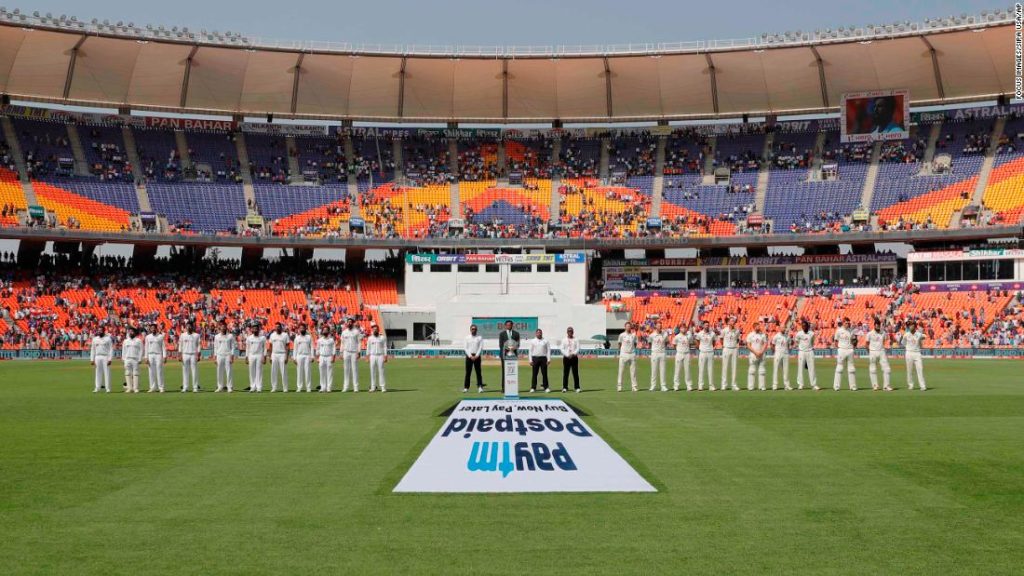The reconstruction plan, which was completed in February 2020, meant that the stadium surpassed the Melbourne Cricket Ground — which has a capacity of 90,000 — to become the world’s largest cricket stadium.
As well as increasing the capacity, an indoor academy with sleeping facilities for 40 athletes was added along with six indoor practice pitches and three outdoor practice fields.
Before its redevelopment, the stadium had a rich history of professional cricket. In 1987, Sunil Gavaskar surpassed 10,000 runs in Test cricket and became the highest run-scorer in Test cricket.
In 1994, Kapil Dev took his 432nd Test wicket and surpassed Sir Richard Hadlee’s record, becoming the highest wicket-taker in that form of the game.
In 2013, Sachin Tendulkar became the first batsman to score 30,000 runs in international cricket.
Day one of the third Test between India and England was the signaled halfway point in a fiercely contested four-match series between the cricket heavyweights.
England won the opening Test before India dominated last time out in Chennai to level up the series.
You may also like
-
Super League: UEFA forced to drop disciplinary proceedings against remaining clubs
-
Simone Biles says she ‘should have quit way before Tokyo’
-
Kyrie Irving: NBA star the latest to withhold vaccination status
-
Roger Hunt: English football mourns death of Liverpool striker and World Cup winner
-
‘Every single time I lift the bar, I’m just lifting my country up’: Shiva Karout’s quest for powerlifting glory

